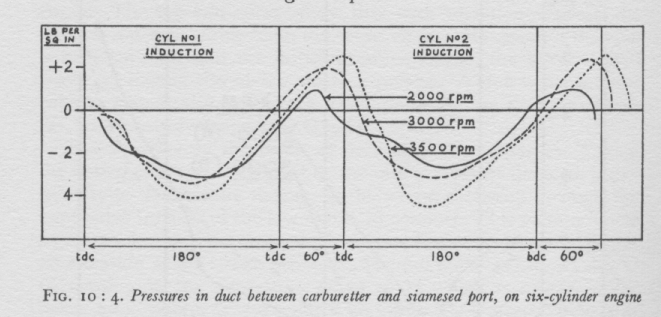Hi Scott
I have been
pondering the use of ram air for the injectors since we last
corresponded.
It seems to that the
primary problem with the injectors is that being constant flow, at idle or low
power levels the fuel just dribbles out of the injector. The airflow is
also low so atomization is poor. Some air sucked from the atmosphere
through the injector helps to atomize the
fuel like a spray gun. The injector AIR flow rate is greatest at low
power because of low manifold pressure, and under those conditions, it
helps the most.
At high power
setting, the injector is pushing out a lot more fuel through the same size
orifice, so that energy of the fuel flow available for subsequent “mechanical”
(pressure) atomization is greatly increased (3 times the fuel flow, 9 times
the energy in the fuel stream exiting the injector). Moreover, the mass
flow of air through the intake port is also much greater. When the air
flow goes through the annular gap between intake valve and valve seat, it
creates a lot of velocity and shear (like a venturi) that further atomizes the
fuel as it enters the cylinder.
Finally, at higher
power settings, particularly at wide open throttle, the pressure just above
the intake valve at the fuel injector site is not the manifold pressure.
It is periodically varying from fairly negative when the intake valve opens
and the cylinder makes a big gulp, and then swings positive after the intake
valve closes and the momentum of the air moving through the intake manifold
causes the air stream to pile up behind the closed intake manifold. This
pressure pulse may cause some of the fuel staining seen externally on some
injectors.
I found this
figure from a book on intake and exhaust tuning which shows variations in the
intake manifold of an automotive engine. Recall that one pound per
square inch is roughly equal to two inches of mercury.

However, one well
calibrated data point is worth 1000 armchair speculations.
So – does ram
pressure on the fuel injectors REALLY help much at high
manifold pressures?
Hard data
please.
Fred
Moreno
PS: please forward
to LML as it bounces my emails.
In a NA
injected engine standard installation, induction air may be drawn from cooling
air above the engine or from some other non-efficient opening and always
filtered. In such cases at WOT, the induction air pressure (MAP) seldom
exceeds the pressure available to the air hole in normal fuel injectors.
Of course at reduced throttle, such as idle where the MAP may be 10-12" Hg
while the ambient pressure in the cooling compartment may be 29" Hg, there is
a dramatic pressure difference. In other words, normally the injector
air hole uses air at the same or higher pressure than that in the induction
system…